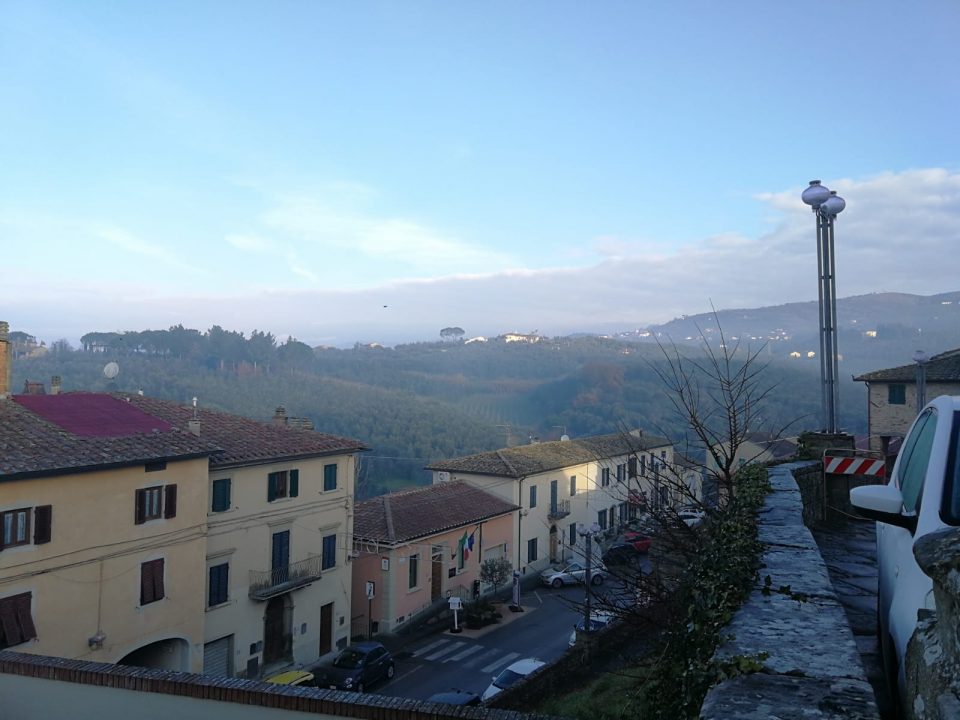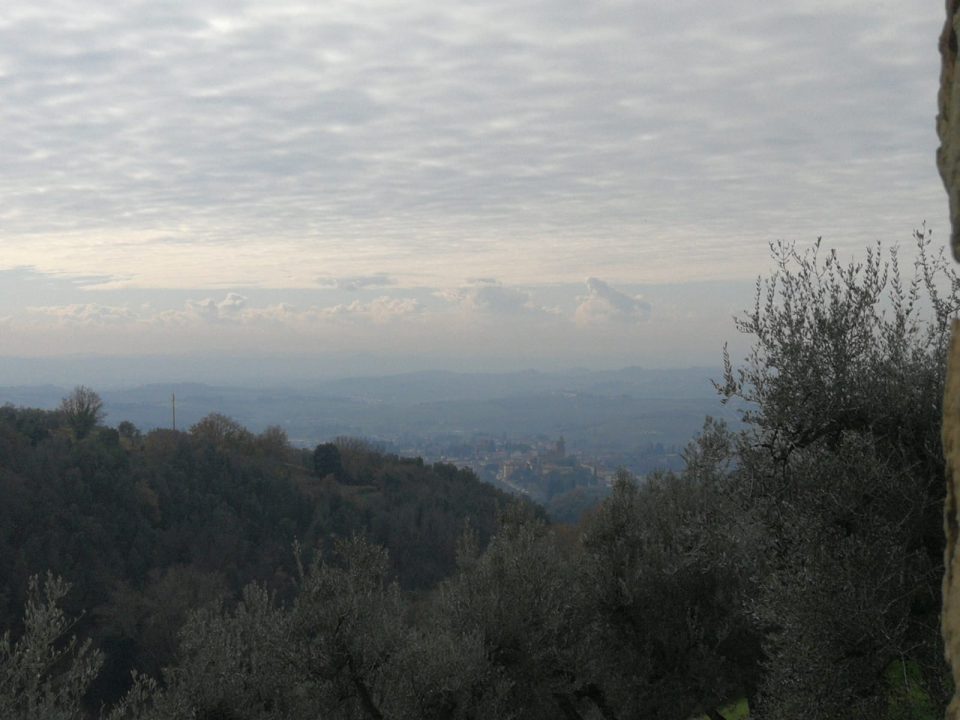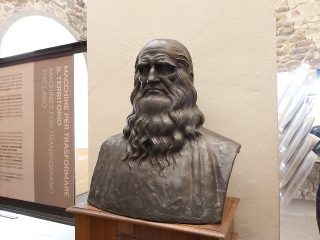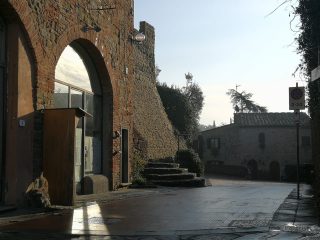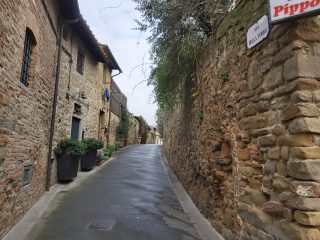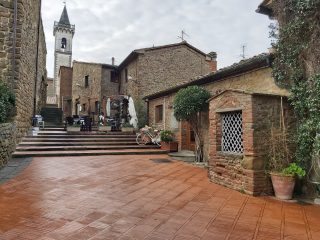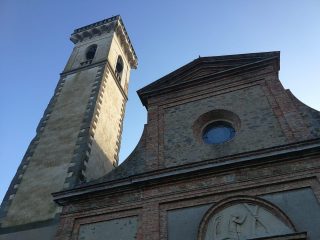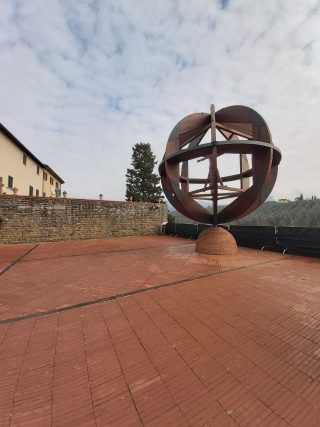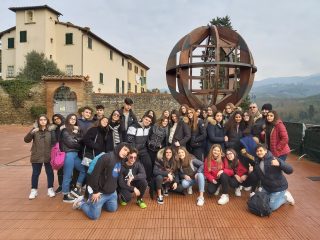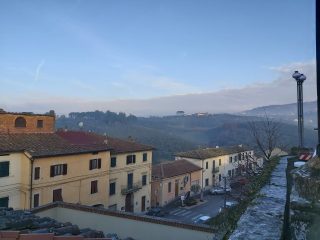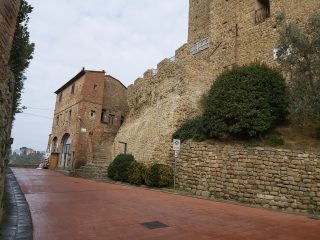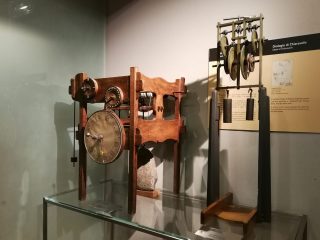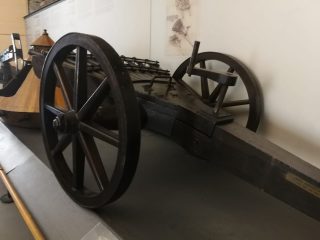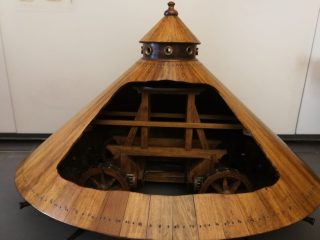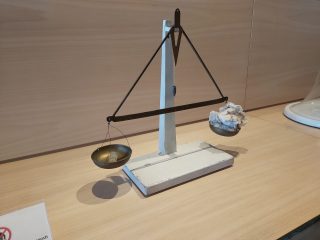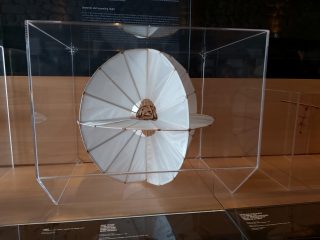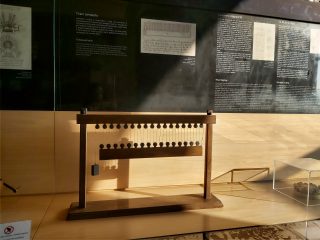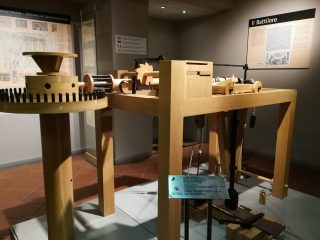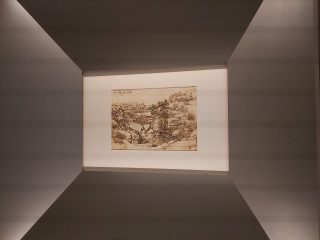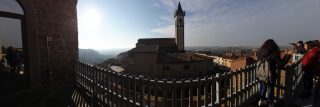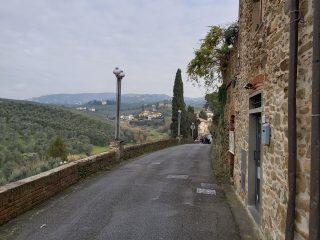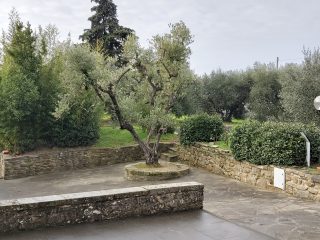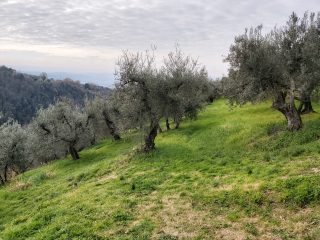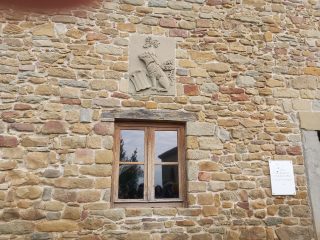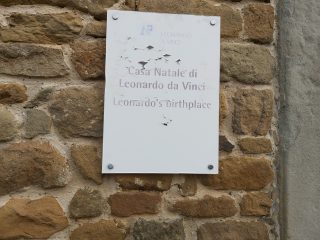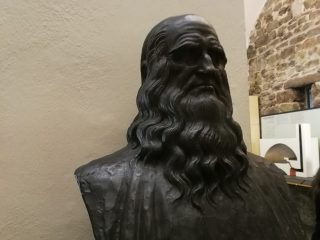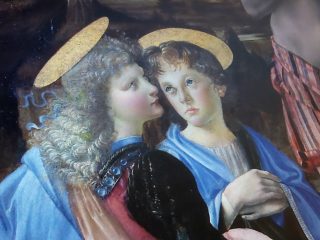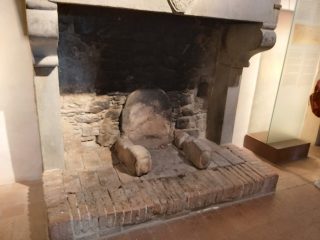VINCI
Vinci is located on the slopes of Montalbano, a beautiful range of hills between Florence and Pistoia, in the heart of Tuscany. The city is famous because Leonardo da Vinci, the great artist and scientist, was born there in 1452. It is also famous for its vineyards and olive groves, which produce excellent wine and extra-virgin olive oil.
Vinci was founded by the Etruscans many centuries ago. In the Middle Ages it belonged to the Counts Guidi Family, who built the castle, which still dominates the city. Vinci fell under the Florentine control in the 13th century and later became a free commune. Vinci was decreed a city in 1954, on the 500th anniversary of Leonardo’s birth.
ITINERARY
Our tour starts at the Town Walls and continues towards Leonardo’s Museum.
On the way to the museum we can admire the Church of Santa Croce, which was built in the 13th century. It has a Romanesque façade and it contains the baptismal font, where Leonardo was baptized, an ancient wooden crucifix, Giovanni della Robbia’s “Madonna and Child” and beautiful paintings such as Fra Paolino da Pistoia’s “Annunciation”.
From here it is easy to reach Piazza dei Guidi, where we can see the Counts Guidi Castle and Palazzo Uzielli.
The castle looks like a fortress and contains beautiful frescoes, decorations, wonderful coats of arms and one of the two parts of Leonardo Museum.
It is also known as the Ship Castle, because of its long shape, which recalls the shape of a sailing boat. Behind the castle, in Piazza Guido Masi, there is a large wooden sculpture by Ceroli (1987), an interpretation of Leonardo’s Vitruvian Man.
Leonardo da Vinci Museum is housed in the Counts Guidi Castle and in Palazzo Uzielli.
The museum, which has been enlarged recently. The collection has become richer and richer thanks to the contributions of scholars, donors and public and private bodies.
Leonardo Museum is very famous all over the world, because it contains one of the richest and most original collections of Leonardo’s machines and models. All the machines and models on show in the museum are presented together with detailed references to the artist’s sketches and notes and with interactive software.
The museum is worth a visit. Here we can see Leonardo’s projects aimed at automatizing the cloth manufacturing process, important machines and models invented by Leonardo such as the slewing crane, the helicopter, the flying machine, the tank, the loom, the screw-press for oil, the ventilator, the parachute and the paddle boat, the models of the self-propelling car, and mechanical clocks.The museum also houses Leonardo’s studies of water and river navigation.
From here it easy to reach the Castle Tower, from which we can enjoy a splendid view of the Tuscan landscape: Montalbano hills and small villages. This landscape is very similar to the one depicted by Leonardo in his maps and drawings.
Our walking tour ends in Piazza della Libertà, where we can see the equestrian bronze monument, carried out by the sculptor Nina Akamu. The statue is inspired by the horse Leonardo designed for an equestrian monument commissioned by Ludovico il Moro in honour of his father, the first Duke of Milan, Francesco Sforza
In Vinci there is also the Leonardo Library, which is an important centre for the study of the great artist and scientist, and the Leonardo Da Vinci’s Ideal Museum, dealing with the complexity of the artist related to his biography and territory.
From the old town centre an ancient path with panoramic views, known as the “Green Road”, leads to Leonardo’s birthplace in Anchiano, a small village near Vinci.
The building is a typical 15th-century Tuscan farmhouse, where Leonardo was born on 15th April 1452 and spent his childhood. The house was part of a small-holding owned by the Da Vinci from the end of the 15th century onwards. Inside the house there are some drawings depicting the Tuscan landscape and a map of the Arno Valley drawn by Leonardo.
FOCUS ON
LEONARDO DA VINCI
Leonardo Da Vinci was an Italian Renaissance genius. He was a great painter, sculptor, architect, engineer, mathematician, anatomist, scientist, musician and writer. His innovations in the fields of painting influenced Italian art and his scientific studies in the fields of Anatomy, Optics, Maths and Hydraulics anticipated many of the developments of modern science. Leonardo is considered one of the greatest artists of all times.
Leonardo was born in Vinci on 15 April 1452. His parents were not married. His father, Messer Piero Frusino di Antonio da Vinci, was a lawyer. His mother, Caterina, was a servant. Leonardo’s full name was Leonardo di Ser Piero da Vinci. He spent his first five years in a farmhouse with his mother. Later, he lived in Vinci with his father, his father’s wife, Albiera, his grandparents and his uncle, Francesco.
In 1467, when Leonardo was fourteen, he went to Florence and became an apprentice to the artist Andrea Verrocchio. While he was in Verrocchio’s workshop, Leonardo learnt drawing, painting, sculpting and model making and met famous artists such as Ghirlandaio, Perugino and Botticelli. In 1477 he painted “The Annunciation” and in 1478 he painted “The Adoration of the Magi”, which are on show in the Uffizi Gallery in Florence.
In 1482 Leonardo moved to Milan, where he worked for the Duke of Milan, Ludovico il Moro. He painted “the Virgin of the Rocks”in 1483-1486, which is now in the “Louvre” in Paris and the “Last Supper” in 1495. In this period Leonardo began to explore the human flight, designed a flying machine and worked on the giant equestrian statue of Francesco Sforza.
In 1503 he returned to Florence and he worked for a powerful nobleman, Cesare Borgia, who was Pope Alexander VI’s son. He travelled around Italy, as a military architect and engineer. and painted his most famous portrait, the “Mona Lisa”.
In 1516, Leonardo went to France. King Francis I gave him a beautiful house called “Clos Lucè”, near his palace, “Chateau Amboise”. He died at Clos Lucè on 2 May 1519 and he was buried in the chapel of the “Chateau Amboise”.
Drawings:
Leonardo did not paint many paintings, but he drew hundreds of quick sketches, plans, maps and detailed drawings.
Some of Leonardo’s drawings are “studies” for his paintings. In these drawings Leonardo planned the things he was going to paint. These studies show buildings, hands, faces, plants and horses.
Leonardo did not go to university to study. He studied by observing things in the world around him. He wanted to understand how they were made and how they worked. He drew the things that he saw and discovered and he made notes and he wrote about them in his notebooks. Many of his notebooks are now in museums.
Notebooks:
Leonardo’s notebooks are difficult to read because he wrote backwards in “mirror writing”. Leonardo wrote (and sometimes drew) with his left hand. In those days pens were made from a quill (a large feather) that was cut with a pen-knife. It is hard for a left-handed person to write with a quill in the ordinary way, but it is quite easy to write backwards.
Studies
Leonardo studied:
- The geology of the earth, with its mountains, valleys, rivers and rocks.
- The anatomy of the human body with its skeleton, muscles, veins and internal organs.
- The anatomy of horses, cows, dogs, and bears.
- The expressions on human faces.
- The flight of birds.
- The weather and its phenomena.
- The way that water flows.
- Light, shadows, mirrors and lenses.
- Perspective and the way to make things look near or far.
- The geometry of solid objects. He drew many careful pictures which were used by the mathematician Luca Pacioli in a book called “De Divina Proportione”.
Designs and Inventions
Leonardo’s most important designs and inventions are:
- War Machines.
- Dams and canals for rivers.
- Flying devices such as a helicopter, a parachute and a hang glider.
- Churches and castles.
